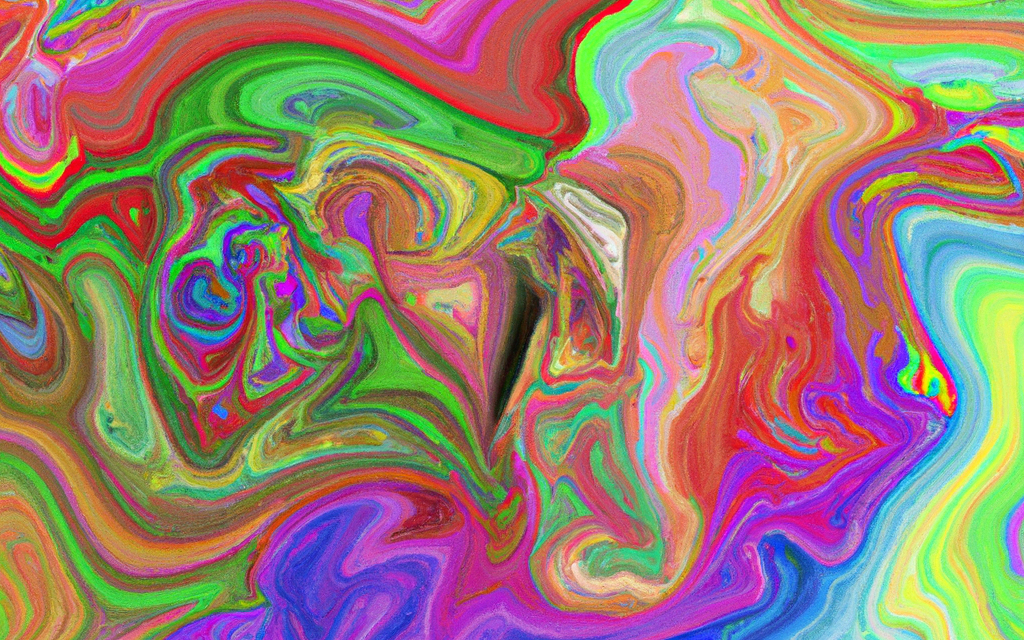The rapid evolution of technology has paved the way for groundbreaking advancements in various fields, particularly the arts. In recent years, Artificial Intelligence (AI) has shown a flair for creativity, producing art that is both captivating and complex. However, there’s a debate that’s been brewing: Is AI-created art a form of plagiarism?
The image for this post was created by DALL-E OpenAI.com. When asked “Create a painting you think another AI would appreciate.”
The Learning Mechanism for AI Created Art
Understanding the roots of this debate requires a look at how AIs are trained. In the case of paintings, AI is typically fed thousands of examples of human-created art. From Renaissance masterpieces to contemporary abstracts, these pieces serve as the foundation for the AI’s understanding of art. Through these examples, the AI learns about content, emotional depth, techniques, and more.
At first glance, this might seem similar to the way humans learn to paint. Aspiring artists are often exposed to a plethora of art from diverse eras and styles. These serve as inspirations, references, and a way to learn techniques. So, is AI’s learning mechanism truly different from ours?
The Human Touch
The distinguishing factor here is the personal touch. When humans create, they channel their emotions, experiences, and unique perspectives into their work. Every stroke, shade, and texture is imbued with a piece of the artist’s soul. This personal touch, this essence, adds a distinct value to human-created art.
AI, on the other hand, lacks this human essence. While it can process, combine, and even generate unique patterns based on its training data, it does so without passion or personality. An AI might create a beautiful piece reminiscent of Van Gogh’s swirling skies or Frida Kahlo’s intense portraits, but it won’t capture the anguish, joy, or soul that human artists pour into their work.
The Future of AI Art
Given the inherent differences between human and AI-created art, it’s likely that we’ll soon see a differentiation in labeling. Much like how we have labels for “Organic” in food, art might come with tags like “AI-generated” to denote its origin. This transparency is crucial, as it allows art enthusiasts to understand and value the creation process.
Does this mean AI art will be devalued? Perhaps in some circles, especially those that deeply cherish the human touch in art. But AI art could also find its own niche, appreciated for its own unique qualities and the technology behind it.
Should We Continue to Teach AI Art?
Absolutely. While AI might not replicate the human essence in art, its creativity is invaluable in other domains. In fields like science, mathematics, and engineering, creative problem-solving can lead to revolutionary ideas and solutions. An AI that’s been trained in creative thinking might offer perspectives and solutions that a human mind hasn’t yet considered.
In essence, while AI art might be seen by some as derivative, the technology’s potential to drive innovation in various fields is undeniable. Whether it’s a paradox or just a reflection of our evolving relationship with technology, one thing is clear: AI and creativity will continue to intersect in fascinating ways. The value we assign to the outcomes, well, that’s for us to decide.
The Ethical Concerns of Imitation
While the debate on the originality of AI art continues, there’s another dimension that is unequivocally problematic: the use of AI to directly imitate or replicate someone else’s art or likeness without consent. Recent developments, like deepfakes, where AI is employed to create hyper-realistic, but entirely synthetic, videos of real people, often celebrities, have raised serious ethical concerns. This isn’t just about plagiarism; it’s about identity theft, misrepresentation, and potential harm. Using AI to mimic a famous actor’s performance, for instance, without their knowledge or permission, robs them of their agency and could damage their reputation. Such actions are not only unethical but can also blur the lines of reality and fiction, leading to misinformation and deceit. While AI has immense potential to enhance our creative landscape, it must be harnessed responsibly, respecting the rights and dignity of individuals.
AI in Science: A Different Landscape
In contrast to the contentious realm of AI in art, its application in scientific domains stands on different ethical and functional grounds. Science often thrives on objective data analysis, pattern recognition, and the ability to process vast amounts of information efficiently—areas where AI excels. Instead of replicating human emotions or personal nuances, AI in science seeks to amplify human capabilities by tackling computational challenges that are beyond human scale.
For instance, AI can identify potential drug compounds from a library of millions within a fraction of the time it would take a human. It can analyze astronomical data to spot distant exoplanets or sift through genetic data to pinpoint markers for diseases. In these contexts, AI acts as a tool to extend human potential, not to imitate or replace the unique human essence. As such, the ethical concerns shift from issues of authenticity and identity to ensuring accuracy, avoiding bias, and harnessing the technology for the betterment of humankind. Such as our platform!

